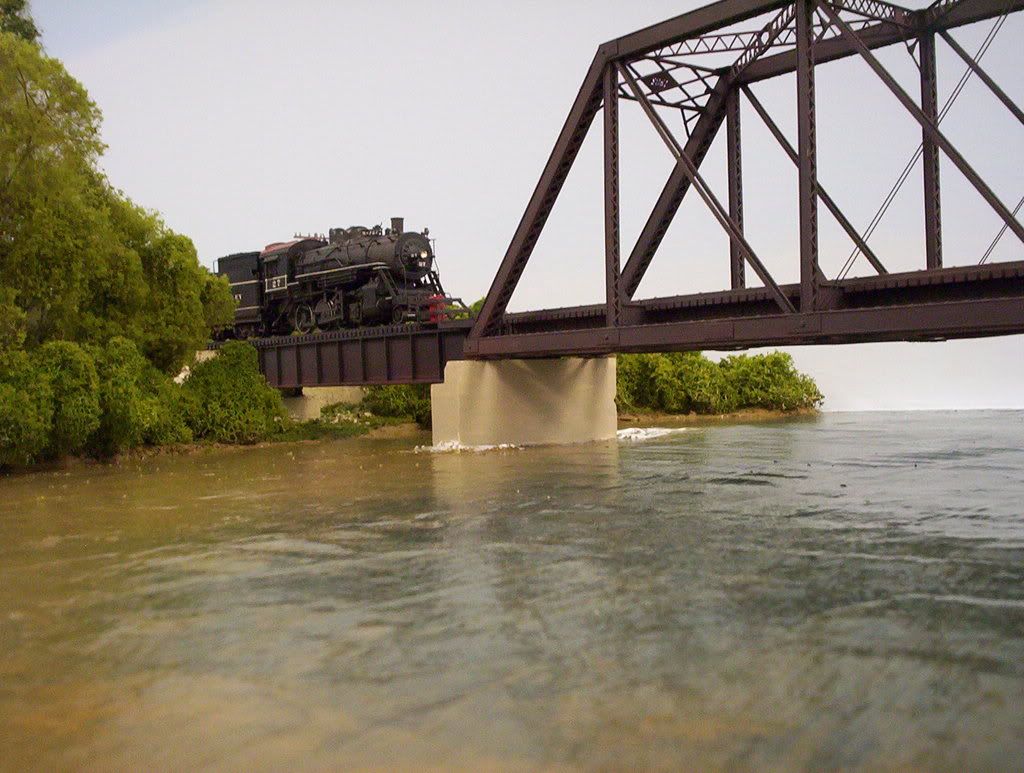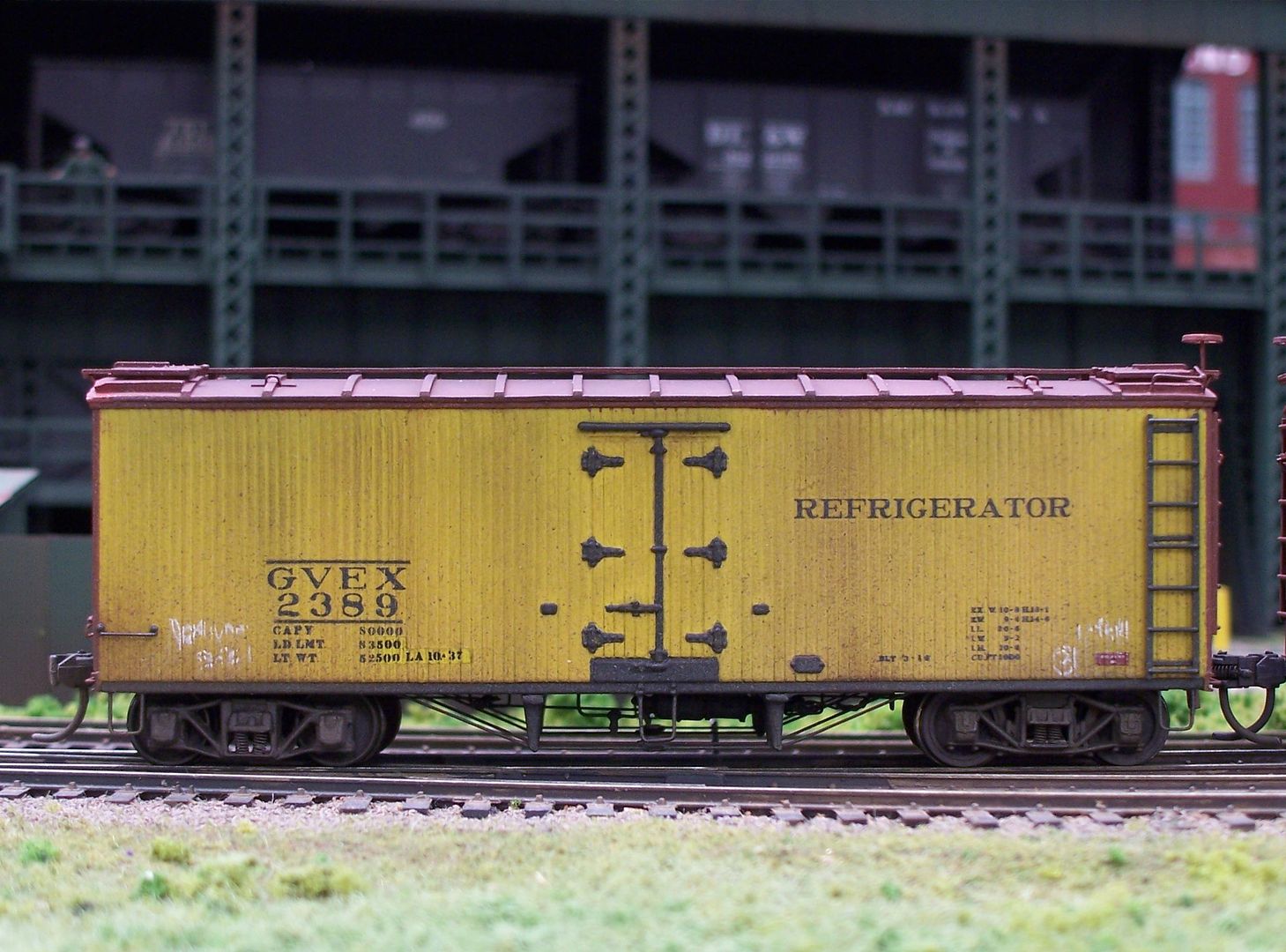I’m mildly surprised that monfilament would take paint.
I plan to use three Campbell wooden bridges, and one Central Valley steel truss, on my Northbound local turn route. Not mainline, light short trains. I hope it will be plausible for 1954.
.
-Kevin
.
Definitely plausible, which one?
That would depend on what you are running over it. 70ton cars, probably not.
I would look into protoype weight restrictions on the different types of bridges. 40 or 50ton cars, definite maybe.
That having been said, B&M had wood covered railroad bridges in service into the mid 1950s on some branchlines. There are color photos of a railfan trip in one of the B&M reference books with Alco S-(dont remember) switchers (a pair of them) pulling a raifan special across a wood covered railroad bridge. The bridge may or may not have had steel re-enforcement inside.
Edit: I forgot why I put 2-6-0 in here. Comparison I guess to the diesels that replaced it.
Here is the weight data:
http://steamlocomotive.com/locobase.php?country=USA&wheel=2-6-0&railroad=bm
GP7s by contrast weigh about 245,000lbs, over a shorter wheelbase, with a higher axle loading.
SW-1s weigh about 199,000lbs, have an even shorter wheelbase, but have a lower axle loading than the GP7. B&M had at least one bridge where the largest locomotive that was permitted was a SW-1, braking was not allowed on the bridge, and speed was restricted to 5 or 10mph.
There is a multi-span timber through truss at East Coulee over the Red Deer River in Alberta that was in use into the 1970s when the Atlas coal mine finally closed. Both CNR and CPR served the mine, although I am not certain which was the owner. Trains were hauled by GP9s, and the cars were typically 70 ton triple hoppers. CP would only run a single unit, but friends watched CN run across with a trio of GP9s.
In my first post in this thread I linked the former Spokana Internationat/Union Pacific Kootenay River bridge in Bonners ferry:
The photo shows a UP SD40-2 crossing the bridge in 1975, ten years before the bridge collapsed under a ballast train.
Here is a photo of four spans of the bridge which replaced one from 1905 in 1932:
So single wooden Howe truss briges were used by heavy trains into the 1980s.
I would assume that there were speed limit and brake restrictions in place on that bridge.
Perhaps a poor railroad would build a river crossing with wooden truss bridges. But a navigation channel needed a larger span so a steel truss was used.
Remember the CV truss bridge follows an early prototype, the SP Piru, CA bridge built in 1902: https://scvhistory.com/scvhistory/lw2461a.htm
Regards, Volker
.
The original bridge kit they offered, I believe it is a 150 foot Pratt Truss bridge. I have owned this kit for around twenty years. Right after I saw an assembled one, I had to have it. It is a beautiful model.
.
-Kevin
.
Here’s a bridge remarkably similar to the CV truss bridge:

There are 4 or 5 along the old SP&S line along the lower Columbia River. One or two have two more panels. They were installed around 1906. In 2015, when I was there last, they were still there, handling those trains of 100 ton coal cars at speed. Noting the rather intense lack of paint, I do believe they’re all slated for replacement.
But.
They’re still here. I think.
That’s what I used for mine, although I simply bent the upper end of each wire and inserted those short protrusions into holes drilled through the sides of the upper members of the truss. The lower ends of the wire aren’t fastened at all.

Monofilament truss rods…

Paint sticks to them without issue. I used Pollyscale, but Floquil worked equally well.
Wayne
I found a more “active” view of one of the old SP&S bridges I was talking about:

The main differences I see between this one and the CV bridge is that there are short diagonals in each end panel, and there are tension bars in the lower edge of each of the two center panels (pretty cool visually, I think).
If you look at the diagonal tension rods (the “piano wire”), you can see they stick out a long ways on each end.
What’s slowed me down on my work on this bridge is that I now don’t have any place to put it. Someday…
Ed